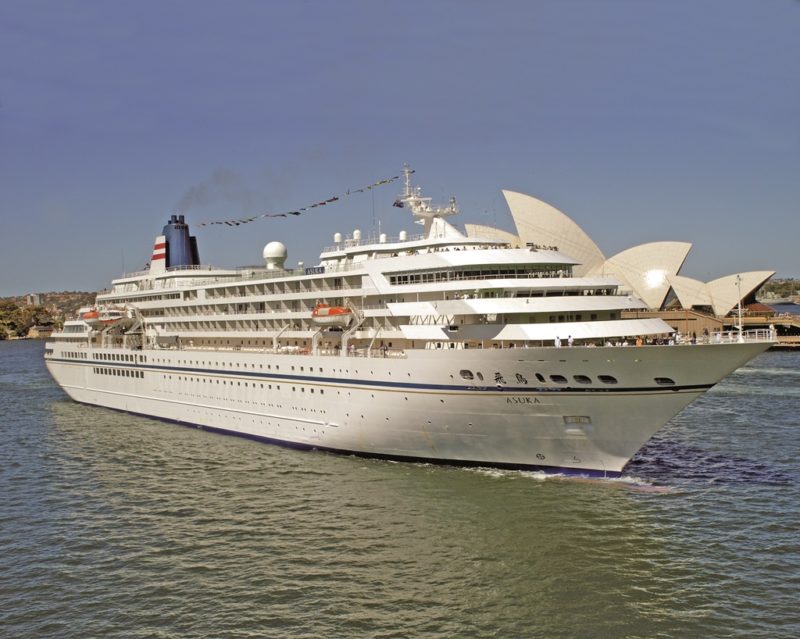
The Port of Sydney Harbour (NSW) is administered by the Port Authority of New South Wales, along with Port of Eden and Port of Yamba. N.S.W. Ports manages the ports of Port Botany and Port Kembla on a 99 year lease agreement that began in 2013, and the Port of Newcastle manages Newcastle port on a 98 year lease agreement that began in 2014. The most famous of these six ports is Sydney Harbour with Circular Quay for cruise ships in the Outer Harbour, and several general cargo, and tanker cargoes handled in the Upper Harbour. Sydney grew from a small nucleus around the harbour with continuous waves of immigration during the 20th century, including British, Greeks, Italians, Yugoslavians, Pacific Islanders, Filipinos, Indonesians, Japanese, Arabs and Asian peoples into a cosmopolitan city with a dominant English-speaking population. Some 40% of all of the citizens of Sydney were born overseas and have come together into a working melting port of humanity.
Port Botany to the south of Sydney Harbour has a large container terminal, and handles 1,600 ships per year carrying over 2.5 million TEU of containers for import and export to the large Sydney and Port Botany area. The port also specialises in petroleum products, lpg and natural gas. The Vessel Traffic Services (VTS) is based in Port Botany to monitor ship movements and provide navigational assistance to Masters of ships across the Sydney and Port Botany sea area and beyond this area to the south.
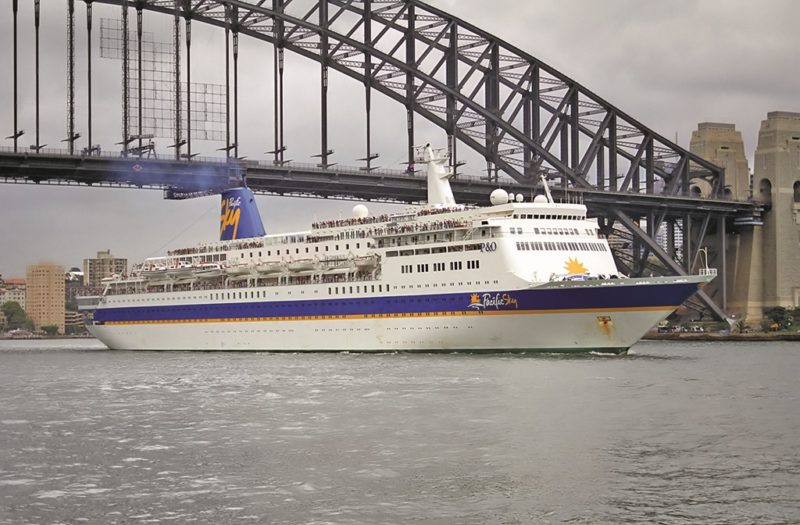
HISTORY OF SYDNEY HARBOUR
The Aborigine Cadigal peoples inhabited the Sydney Cove and Harbour area for thirty thousand years. Rock carvings, engravings and art are still visible in the Hawkesbury sandstone of the area, but their settlements have been destroyed by the urban construction of Sydney with a population of 4.1 million in 2006, and currently over 6.0 million call Sydney home in 2023.
In 1770, Capt. James Cook landed at nearby Botany Bay, and made an initial contact with the Aborigine people. In early 1788, Capt. Arthur Phillip arrived at Botany Bay with a fleet of eleven ships and some 1,500 people to establish a convict settlement by order of the British Government. However, he realised that Botany Bay would not support the settlement due to its poor soils and scarce fresh water. He moved the colony north to Sydney Cove on 26th January 1788 at Port Jackson, later renaming the new colony as Sydney after Lord Sydney, the British Home Secretary who had authorised the colony as a penal settlement.
During the following year of 1789, over one thousand Aborigine people of the region died from violent resistance to the British settlers, or from the diseases they brought with them.
The few survivors left in 1820 adopted the Christian religion and were separated from their Aborigine clan structure. The convicts brought to the penal colony found it an unforgiving environment, and had to clear the land by hand with food being very scarce. There were continuous conflicts between the Governor, the convicts, the free settlers and the Aborigines. As New South Wales was explored and the settlers pushed westwards, the Port of Sydney Harbour began to grow quickly. The New Government of New South Wales supplied free land, convict labour, and development works and projects for the settlers, and also guaranteed the markets for their produce. Under the leadership of Governor Lachlan Macquarie, Sydney Harbour was transformed from a penal settlement to a thriving town in the early 19th century.
Francis Greenway was the architect who designed several wonderful buildings, such as St. James Church, and the Hyde Park Barracks. Public works included hospitals, churches, courthouses, parks and schools. In 1822, Sydney Harbour had the makings of a medium sized town with banks, markets, and a well-organised police force. During the 1830s and 1840s, new waves of immigrants arrived from Britain and Ireland and other countries, making it an international town, with the first Mayor appointed in 1842, John Hoskins. The population swelled from 60,000 to 400,000 between 1850 and 1890, and then to a million people in 1914.

The Port of Sydney Harbour began to be managed by the appointment of the first Harbour Master in 1811. During that century, the wharves of the port were privately owned, and led to ramshackle development, which continued until the outbreak of the dreadful bubonic plague of 1900. The Sydney Harbour Trust was formed in 1901 to take over and develop the wharves. These arrangements continued until 1936 when the Maritime Services Board (MSB) was established to co-ordinate under one authority, all port and navigation services for New South Wales, with the exception of Port Kembla, which came under MSB control in 1948. The general shift of trade to Asia as well as to Britain and Europe in the 1950s and 1960s benefitted Sydney Harbour.
Darling Harbour in the Inner Harbour at King Street Wharf in Barangaroo gained many wharves and grew in importance. During the 1960s and 1970s, the MSB embarked on a Ten Year Plan to redevelop Darling Harbour within the Inner Harbour of Sydney. The growth of container trade made increasing demands on wharf space and facilities, and the MSB made feasibility studies for the construction of a large container terminal at Botany Bay, today called the DP World Container Terminal of Sydney. Construction of Port Botany began in 1971 and the port opened in December 1979, and is now the site of three major dry terminals and two bulk liquid facilities.
The SPC (Sydney Ports Corporation) was established in 1995 after a series of reforms to the MSB, allowing the new State-owned Corporation to take a greater commercial and client focused approach to the management of international shipping. The MSB had been abolished in 1955, bringing an end to a chapter in the history of Sydney Harbour. This change resulted eventually in 1995 in the formation of the three individual State-owned port corporations at Newcastle, Port Kembla and Sydney (Sydney Harbour and Port Botany). After the restructure in 2011 of the NSW Maritime and the Roads and Traffic Authority, the Government transferred the managements of the Port of Eden and the Port of Yamba to Sydney Harbour Port Authority from 1st December 2011.
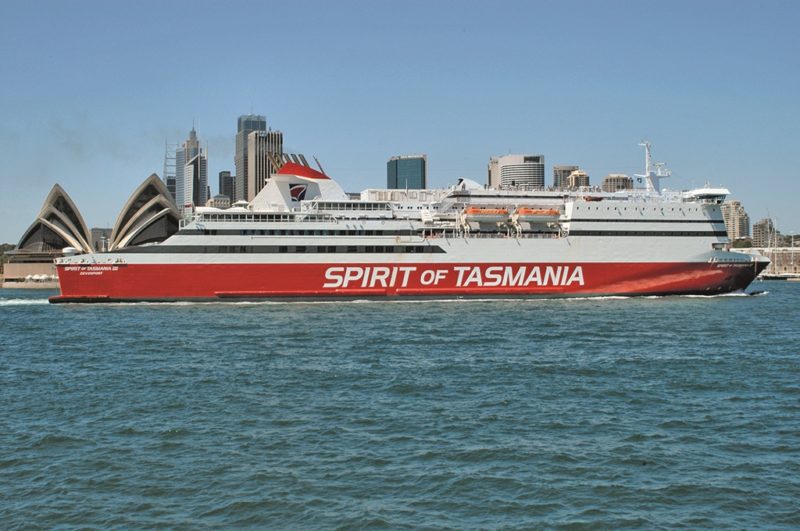
The Port Authority of New South Wales was established in July 2014 with the amalgamation of the Sydney Harbour, Newcastle and Port Kembla port corporations. The amalgamation followed the long-term leasing by the NSW Government of each corporation’s landside operations at Sydney Harbour and Port Kembla in 2013 and Newcastle in 2014.
The Port Authority of New South Wales retains the significant role of Harbour Master, management of dangerous goods and emergency response to oil spills, plus the responsibility for the navigation, security and operational safety of the six ports within its jurisdiction.
The Port Authority also operates the two international cruise terminals in Sydney Harbour of the Overseas Passenger Terminal at Circular Quay in the Outer Harbour, and the White Bay Cruise Terminal in the Inner Harbour. The large Glebe Island bulk facilities are also in the Inner Harbour.
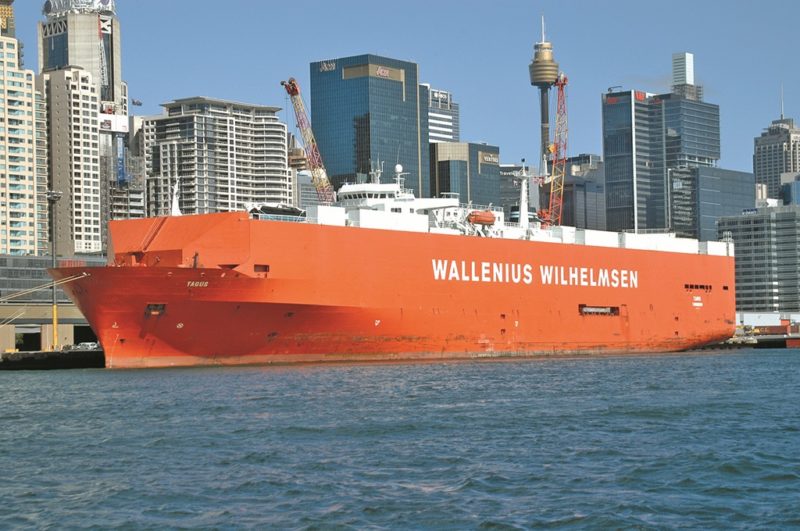
PORT FACILITIES OF SYDNEY HARBOUR and PORT BOTANY
Sydney Harbour port facilities cover a big area of 41.7 hectares with the Inner Harbour having the Glebe Island and White Bay facilities, and the Outer Harbour having the Circular Quay cruise terminal of the Overseas Passenger Terminal (OPT), with the harbour having a constant stream of ferries and yachts bound for Manly, a golden sand resort similar to Brighton on the South Coast of England.
Sydney Harbour is one of the most beautiful harbours in the world, and is famed for its sparkling waters, iconic buildings such as the Sydney Opera House and Sydney Harbour Bridge, opened in 1932 four years after and longer than the Tyne Bridge at Newcastle upon Tyne, but designed and built by the same Cleveland Bridge Company with steel by Dorman, Long & Company of Middlesbrough.
Sydney Harbour is a working harbour with a thriving maritime industry to support the economy of the city. Sydney Harbour is the busiest waterway in Australia and as many as 1,200 merchant ships arrive and sail per year.
Nearly 200 cruise ships per year arrive at the Overseas Passenger Terminal and the White Bay Cruise Terminal. At the heart of the Inner Harbour, is the large Glebe Island, a working port since 1901 that today has provided Sydney with a vital maritime supply route for construction materials for the city, with completed projects such as the Sydney Metro, West Connex and the Western Harbour Tunnel. Glebe Island and White Bay berths are 6,200 feet in length for cargo or lay up.
- Planning approval has been given for a new Glebe Island import, storage and distribution facility for construction materials such as sand and aggregates. The harbour berths are as follows:-
- Glebe Island 1 and 2 Berths as common user berths.
- Glebe Island 7 imports of gypsum and sugar for Gypsum Resources Australia and Sugar Australia, as well as salt.
- Glebe Island 8 as a common user berth for Cement Australia.
- Glebe Island 11 for a new sand and aggregates import berth, which are unloaded via the vessel’s own self unloading equipment into an enclosed facility to reduce dust and noise emissions.
- White Bay 1 Cargo Berth as a common user berth.
- White Bay Cruise Terminal (WBCT) Gore Cove 1 and 2 berths for refined petroleum products of Viva Australia.
- Gore Cove 2 berth opened in 2013, and Gore Cove 1 berth has been operational since 1979, both berths accommodate tankers of up 100,000 dwt.
- Overseas Passenger Terminal (OPT) for cruise ships at Circular Quay in the Outer Harbour and in the shadow of the mighty Sydney Harbour Bridge. The OPT and the WBCT welcome 200 cruise ships per year with over 1.5 million
- passengers per year, generating $2.75 billion for the NSW economy and supporting 10,000 tourist jobs.
- The Athol Buoy, Point Piper Buoy and Bank Anchorage are available for short term use by ships while waiting for their main or alternative berths to become available.
-
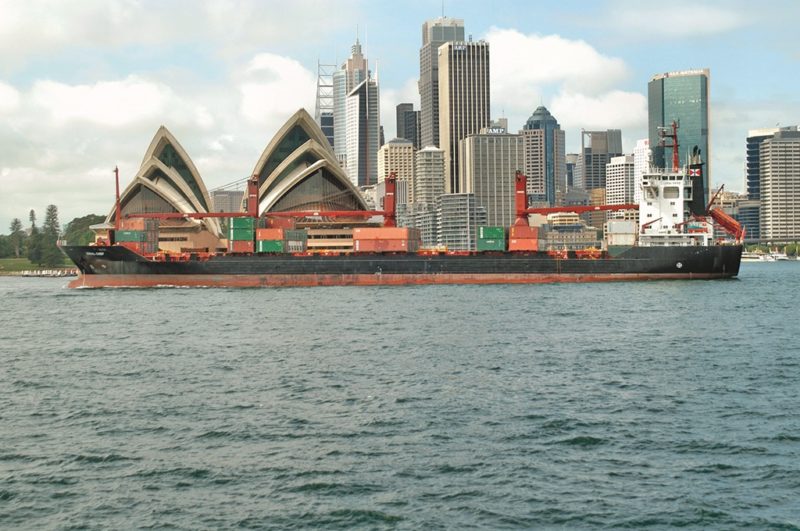
Swire’s feeder ships were regular visitors servicing the Pacific Islands. Here we see the 10,352gt Coral Chief leaving Sydney in December 2006. She was built in 1990 by Miho at Shimizu. From 2008 to 2011 she was renamed Pacific Harmony while on charter and in 2014 she was renamed Melanesian Chief when a new Coral Chief was being built. On 26th September 2020 she arrived at Alang to be broken up by Jawandamal Dhannamal. (Nigel Lawrence)
The multi-purpose cargo ship Helvetia owned by D Ship Carriers arrived in Sydney Harbour on 11th July 2019 with two new long gangways, and installed them in place on the OPT berth using her twin heavy lift port side cranes. The new gangways have better supports for the larger number of cruise passengers arriving on ships with over 5,000 passengers.
The full list of cruise ship arrivals at the two berths in Sydney Harbour for 2023 were as follows:-
Cruise Line alls at OPT/WBCT
- P & O. (Australia) Cruises 50
- Carnival Cruises 25
- Princess Cruises 25
- Royal Caribbean International 22
- Celebrity Cruises 10
- Disney Cruises 7
- Holland America Line 4
- Seabourn Cruises 4
- Silversea Cruises 4
- Virgin Voyages 2
- Viking Ocean Cruises 2
- Oceania Cruises 2
- Regent Seven Seas Cruises 2
- Norwegian Cruise Line 2
- Azamara Cruises 2
- Crystal Cruises 1
- Fred. Olsen Cruises 1
- Le Ponant Cruises 1
- Aida Cruisesm1
- National Geographic Cruises 1
- Mystic Cruises 1
- Hapag Lloyd Cruises 1
TOTAL 170
A record number of 50 arrivals was made by the P. & O. (Australia) cruise ship Pacific Adventure, the former Golden Princess of Princess Cruises, completed in 2001 by the Fincantieri yard at Monfalcone in Italy as a ‘Grand Princess’ ship with two sisters, Grand Princess and Star Princess. She has dimensions of overall length of 290.0 metres, moulded beam of 36.0 metres and a draft of 8.1 metres. She is of 109,000 grt with a total of 17 decks, of which 13 are for her 2,600 passengers, and she carries a crew of 1,100. She cruises around the Pacific and Oceania areas with her sister ship Pacific Encounter, previously Star Princess, based at Brisbane for cruises of up to ten days in duration. Carnival Corporation of Miami are their ultimate owners, and announced in 2017 that these two giant cruise ships would be transferred to P. & O. (Australia) Cruises in 2021.
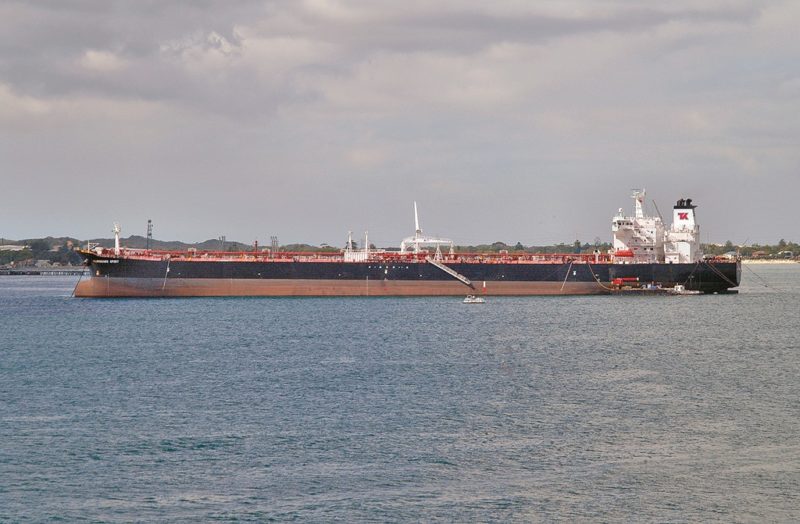
In addition, 26 cruise ships arrived in 2023 from the Port of Newcastle on a coastwise voyage to the OPT or WBCT in Sydney Harbour that are not in the above figures. Also, 16 cruise ships had called at the Carrington Cruise Terminal and Queen’s Ferry Terminal in the Port of Newcastle in season 2018/19, and the same number in season 2019/20 before moving down to Sydney, including cruise ships of P. & O. (Australia) Cruises , Princess Cruises, Crystal Cruises, Royal Caribbean International Cruises, Seabourn Cruises, Silversea Cruises, Regent Seven Seas Cruises and other international cruise lines.
The number of cruise passengers numbered over 30,000 in each of these two cruising seasons at Port of Newcastle. There were also a dozen cruise calls at the other four N.S.W. ports in 2023 that moved on to Sydney Harbour from the same cruise fleets, and are not in the above figures.
The Port of Sydney Harbour is recognised as the best cruise ‘turn round’ port in the world by cruise experts, and the number of cruise calls has steadily increased from 150 in cruise season 2010/11. The Covid 19 pandemic however closed the port to cruise ships temporarily during lockdown for around 18 months, but has now built up again to former levels in 2023. The Port of Sydney Harbour has had a dedicated marine pilotage service for the past 225 years.
All first time cruise ship calls are given a special plaque from the port authority to mark the occasion.
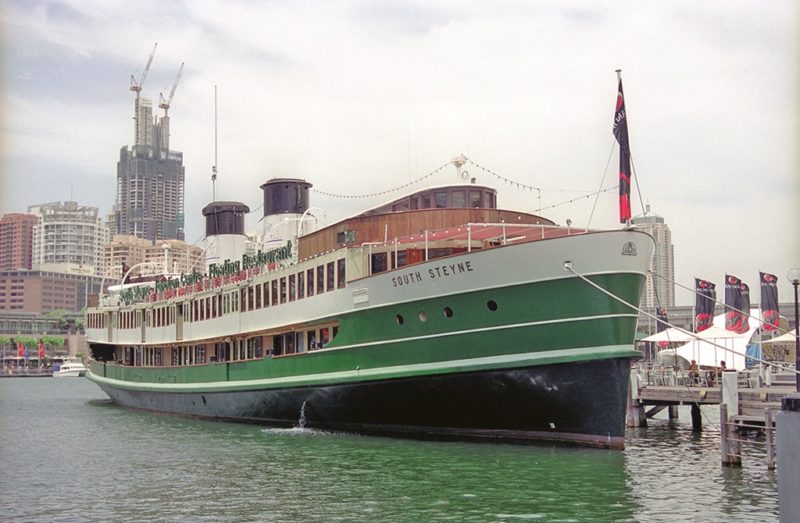

PORT BOTANY
Port Botany of Sydney Ports is just 12 nautical miles south of Sydney Harbour, and adjacent to the east of Sydney Airport. The port is an integral and critically important part of Sydney Harbour operations.
A mammoth dredging and reclamation project of Botany Bay began in 1976 but was put on hold during the Simblist Inquiry, then began again in 1977 with Brotherson Dock formally opened on 10th December 1979 to begin a very new shipping era for Australia. A $1 billion expansion fund was secured in 2005 to allow the port to cater for long term growth.
This expansion project has doubled the container handling capacity of the port. Most of the cargo passing through Port Botany is containerised including imported machinery, chemicals and chemical related products, manufactured transport equipment and goods, household goods, chemicals, paper and paper products such as paperboard, textiles, edible products, non-metallic mineral products, beverages and tobacco, wood, timber, cork, processed food, fruit and vegetables. Exports include cotton, wool, cereals, meat, wine, animal feedstock, non-ferrous metals, pulp and waste paper, iron and steel, and aluminium. Dry bulk cargoes include sugar, cement, salt, as well as liquid bulk cargoes of petroleum crude oil and refined products, LPG and chemicals.
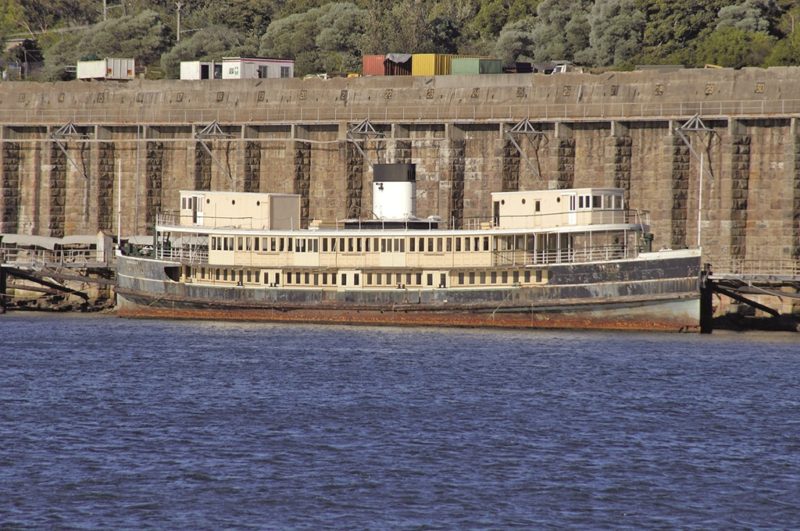
THREE CONTAINER TERMINALS
Port Botany is a very large container port with a throughput of 2.8 million TEU per year and has capacity for up to 8.0 million TEU per year, contributing $10.7 billion to NSW State gross product every year, supports 52,000 jobs, with 42% of all items in a typical Sydney household being imported in containers into Port Botany.
Port Botany handles 99.6% of containers, all of bitumen imports, 90% of bulk chemicals, 98% of LPG, 30% of refined petroleum fuels and 15% of aviation fuel of N.S.W. Ports. Some 80% of all import containers travel no further than 40 kilometres from Port Botany, with 1,600 ships arriving in the port every year.
The port has a deep water channel and a short transit to the container dock with container ships on both sides of the dock at three container terminals with a dozen berths, many ZPMC Post Panamax Gantry Cranes. The container Terminals are named:-
- DP World Australia (Brotherson Dock)
- Patrick Terminals (Brotherson Dock)
- Hutchison Ports (Hayes Dock)
Total quay length of the three terminals is 3,793 metres, and good freight rail capacity removes the need for double handling by trucks. Port Botany is the only container port in Australia with a regulated truck booking and penalty system, thus delivering fast truck turn around times, with savings for exporters and importers. The Foreshore Ring Road completely encircles the port, and the port also handles empty container parks, transport operations, warehouse storage, and Australian Customs.
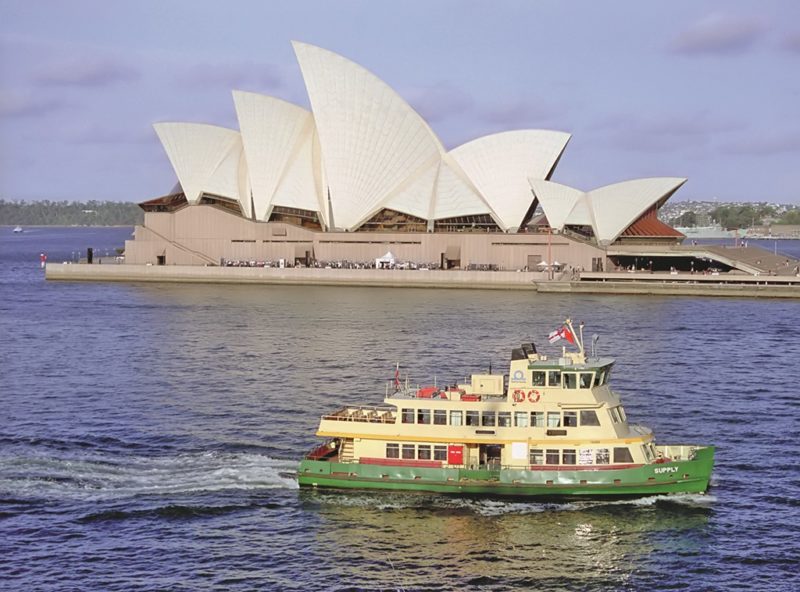
Port Botany is the primary bulk liquid and gas port in New South Wales, and the largest liquid bulk port in Australia handling over 5.5 kilolitres of bulk liquids and gas each year. There are two bulk liquid berths, BLB1 and BLB2, with an average berth occupancy at BLB1 of 80% in February 2014 when BLB2 was officially opened.
The new berth significantly increased the liquid bulk and chemical throughput of the port. BLB2 is a steel piled pier berth constructed adjacent to the existing BLB1 berth, with marine loading arms, fire-fighting equipment, on shore support facilities, and pipelines from existing user sites to the new berth.
Port Botany is home to the Vessel Traffic Services of Sydney Ports, with ships tracked by automatic AIS systems, and information is passed to mariners and other parties.
The port has 1,600 ships arriving each year carrying 2.6 million TEU of containerised cargo, with MSC Elma and Maersk Skarstind of 9,500 TEU capacity arriving in July 2019.
A new combined service between MSC and CMA CGM began in September 2019 on a service from Northern Europe to the Mediterranean, Indian Ocean and Australia on the south leg, and from Australia to South East Asia and back to Northern Europe on the north leg.
The Cooks River logistics site of 17.2 hectares is located 8 kilometres by rail to Port Botany, and has the largest empty container storage in New South Wales with storage for 17,200 TEU of containers, and one of two sites with rail access for trains up to 600 metres in length. Empty containers are cleaned, repaired and repainted for further use at Cooks River logistics site. The Enfield logistics terminal is the other site with 60 hectares and is located 18 kilometres by rail from Port Botany.
N.S.W. Ports is investing $250 million to develop the site to transfer freight from the roads to rail, with more space available for storage, logistics transfers, freight forwarding, packing and unpacking and warehousing.
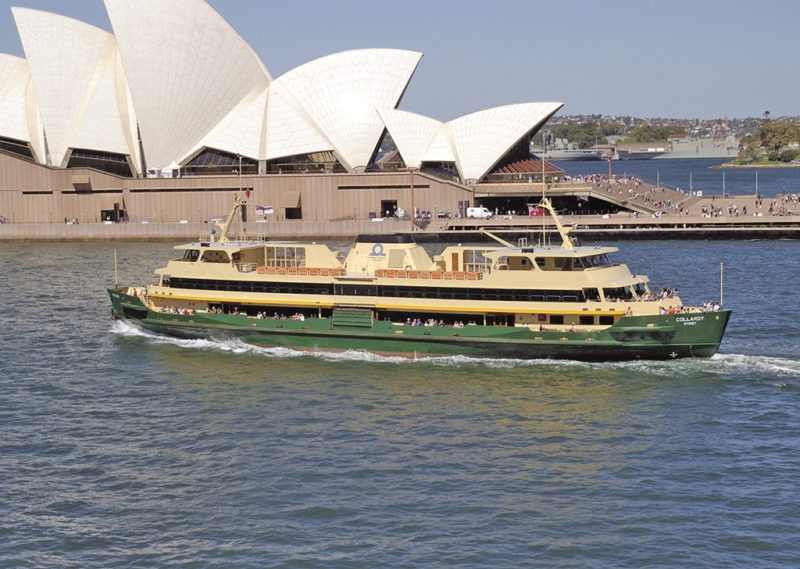
SYDNEY HARBOUR FERRIES
In 1932, at the opening of the graceful Sydney Harbour Bridge, the Sydney Harbour ferry services were the largest in the world, with 40 million passengers in 1932, 37 million passengers in 1945, 11 million passengers in 1963, and has since recovered to almost 20 million passengers today. There have been hundreds of small harbour ferries crossing both the Inner and Outer Sydney Harbour since the early 1830s, connecting the main suburbs of Balmain, Barangaroo, White Bay, Glebe Island, Circular Quay, the Sydney Fish Market, the Parramatta River, and the coastal resort of Manly, a seven nautical mile journey from Circular Quay. Henry Gilbert Smith envisaged Manly as a seaside resort and fun destination along the lines of Brighton on the south coast of England. In the early 1850s, he chartered the paddler Huntress and built a wharf at Manly in 1855 and chartered other paddlers for excursions to Manly. He eventually acquired an interest in the steamers himself and added more regular chartered paddlers. By 1873, Smith had sold the lease to the wharf and his share of the steamers to the operators of the ferries. The business was later acquired in 1875 by John Randal Carey, who later founded the Sydney Daily Telegraph newspaper, and together with three other businessmen formed the famous Port Jackson and Manly Steamship Co. Ltd. on 23rd January 1877. There have been several other ferry companies operating in the harbour, including the following:-
- Parramatta River Steam Company for leisurely cruises along the drowned river valley to the inland town and major suburb of Parramatta, located around 15 miles inland from the western extremity of Sydney Harbour. The population of Parramatta is around 200,000 and it is a popular destination to live for people arriving as migrants to Australia, and close to the attractions of Sydney Harbour. There are leisurely ferry cruises today from Sydney Olympic Park to Parramatta. Parramatta also has a financial business aspect, as it was created as the second central business district of Sydney in the late 1960s.
- North Shore Ferry Company
- Balmain Steam Ferry Company
- Balmain New Ferry Company
- Sydney Ferry Co. Ltd.
- Port Jackson & Manly Steamship Co. Ltd.
- New South Wales State owned ferries
- Sydney Ferries brand, the current catamaran operator
The ferry Wallaby of 163 grt was the first double-ended screw ferry on Sydney Harbour in 1879 with two navigation bridges, a design that became very popular as it saved time in turning the ferries on the very frequent crossings. Coastal cruises became popular as well as those to Sydney Heads, which are a series of seven headlands that form the 1.2 mile wide entrance to Sydney Harbour. All of the headlands are either to the North e.g. at Manly, or to the South e.g. at the Hornby Lighthouse of the harbour entrance.
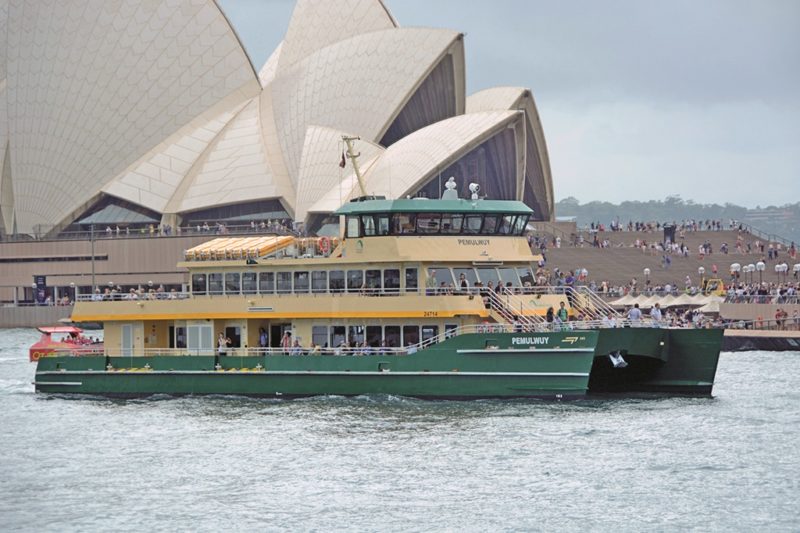
Ferries have been the main mode of transport on Sydney Harbour for 170 years, connecting Circular Quay and the main central Sydney business district with the suburbs. The growing population of Sydney was swelled by ‘quick rich’ gold prospectors in the Gold Rush of the 1850s. Many different designs of ferries have been tried including paddlers, double-ended ferries, coal-fired and oil-fired steamers, diesel motor ferries, hydrofoils and catamarans. The biggest and best designed Sydney Harbour ferry was the twin funnelled South Steyne of 1,203 grt, built to carry 1,781 passengers at a service speed of 17.5 knots with a triple expansion steam engine supplied by Harland & Wolff Ltd. at Belfast. She was launched by the Henry Robb Ltd. yard at Leith on 1st April 1938 after her keel was laid in October 1937. She was named after the promenade behind ocean beach at Manly, and after a 64 day voyage from Leith that included a grounding in the Suez Canal she arrived in Sydney Harbour at midday on 9th September 1938. She featured padded lounges and a wine bar for those who could down a few quick drinks on the short 15 to 20 minutes crossing to Manly. She made over 100,000 crossings of the harbour to Manly and carried over 92 million passengers. She was retired in 1974 and converted into a floating restaurant and is currently laid up in Berrys Bay in Sydney Harbour.
The wooden screw steamer Manly of 229 grt was built at Balmain in 1896 for the Port Jackson and Manly Steamship Company as the first double-ended screw ferry on the Manly run. She made the best crossing time of 22 minutes for a steamer, but suffered from severe vibration problems. This was corrected in the next double-ended steamer, Kuring-gai, built in 1901 with a steel hull at Balmain. She was sold in 1928 and became a Papua New Guinea stores ship during World War II, her rusted remains lie today in the coal mining town of Hexham inland from the Port of Newcastle.
A series of six famous ‘Bal’ class double-ended steam ferries to carry 1,500 passengers were then built between 1905 and 1922 of between 450 and 500 grt at Balmain by Mort’s Dock Company in Binngarra of 1905, Burra Bra of 1908, Bellubera of 1910, Balgowlah of 1912, Barrenjoey of 1913, and Baragoola of 1922. Binngarra became a stores ship in Papua New Guinea during World War II, and was scuttled off Sydney in 1946. Burra Bra was requisitioned by the Royal Australian Navy as an anti-submarine training ship and target tow, and was sold in 1947 and broken up in 1951. Bellubera was sold in 1973 and broken up with her hulk scuttled off Long Reef in 1980. Balgowlah was sold in 1953 and broken up and her hulk converted to a lighter, which was later scuttled near Iron Cove Bridge. Barrenjoey was rebuilt in 1951 and renamed North Head, and is currently laid-up at Cairns in Queensland. Baragoola sank while laid up in Sydney Harbour on 2nd January 2022, with her hull then tied up awash to a quay, however the seawater had caused much damage and she was broken up.
Two larger ferries were then completed in 1928 in Scotland by Napier & Miller Ltd. on the Clyde as Dee Why and Curl Curl of 799 grt to carry 1,587 passengers, and they served for over 35 years on Sydney Harbour. Dee Why was broken up in July 1968, with her hulk scuttled off Long Reef in May 1976, while Curl Curl was broken up in July 1963 with her hulk scuttled off Sydney in August 1969. The Port Jackson & Manly Steamship Company was thus operating eight harbour ferries in 1930.
Hydrofoils were introduced in 1965 to provide a high-speed service to Manly in an attempt to boost revenue, with Manly (2) as the first hydrofoil for the Port Jackson and Manly Steamship Company. Whilst they proved popular, their mechanical unreliability led to their demise, and they were later replaced by JetCats and SuperCats in the early 1990s.
The upgrading of the Spit Bridge in 1958, better roads including the Warringah Freeway, and a big increase in car ownership spelled the end of the Port Jackson & Manly Steamship Company in 1974. The company was acquired by Brambles Industries, but they issued a threat to severely cut back the frequency of the Manly service. The New South Wales Government then stepped in and arranged for the Public Transport Commission to take over the service from 1st December 1974. Big ferry services were restored in 1983 with four new State-owned ferries of 1,184 grt on dimensions of length 70.4 metres by beam of 13.1 metres with a service speed of up to 18 knots. They were the green hulled with cream upper works of Collaroy, Freshwater, Narrabeen and Queenscliff.
The catamaran Nicole Stevenson was also employed, but the N.S.W. Government decided in December 2008 that the JetCat service would cease, and called for tenders from private commercial operators to run the service.
Manly Fast Ferry began operating on 10th February 2009 and concessions have operated for other companies since then, including Bass & Flinders Cruises. Second hand fast ferries have been used, and four new Incat catamarans were built by the end of 2015, two of 33 metres in length and two of 24 metres in length. A third catamaran of 33 metres in length was completed in 2018 for the Manly to Circular Quay service by Incat their Hobart shipyard. These catamarans have names such as Ocean Flyer under the Sydney Ferries brand. A short-lived service also operated from Darling Harbour to Manly calling at nine stops until it ceased in 2018. The Port Jackson and Manly Steamship Company was famous for having coined the expression about Manly ‘Seven Miles from Sydney and a Thousand Miles from Care’, as well as promoting the development of Manly Beach Resort, and other developments in the Pittwater and Broken Bay areas.
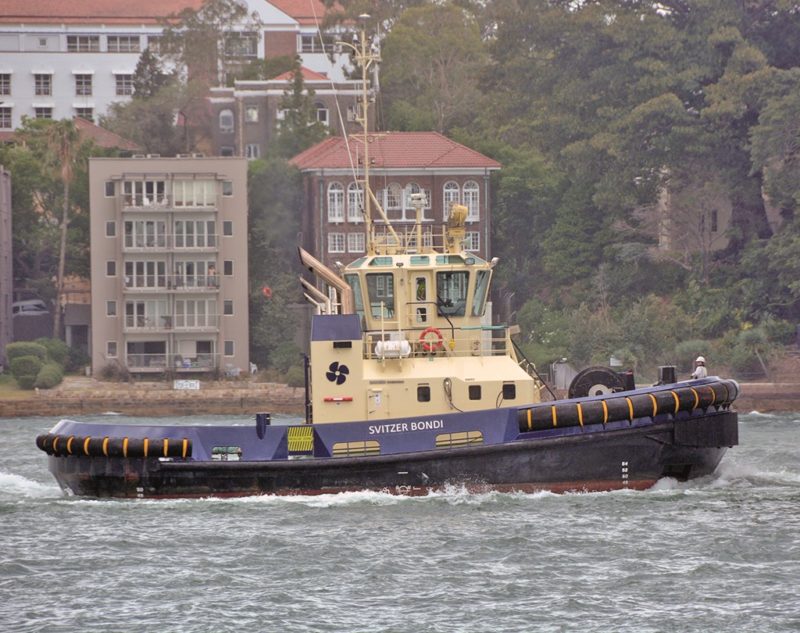
SUMMARY
Capt. Philip Holliday is the Chief Executive Officer (CEO) of Port of Sydney Harbour, having been appointed in May 2011 as Executive General Manager and Harbour Master, becoming Chief Operating Officer and Harbour Master in 2014. He has spent his whole career in shipping, starting as a 16 year old cadet with Ropner Shipping in Darlington and later moving to Souter Shipping in Newcastle. He was part of the team that established the N.S.W. Ports Authority in 2014 following the amalgamation of the ports of Sydney Harbour, Port Kembla and Newcastle.
John Finch is the Chief Operating Officer of the Port of Sydney Harbour, controlling the visits of thousands of trading and cruise ship arrivals every year. The six ports of the Ports of New South Wales form the Premier Port of Australia, with all six seeing increases in traffic, with six thousand commercial visits to the six ports carrying 212 million tonnes of cargo worth $100 billion in 2023.
The U.K. Free Trade Agreement with Australia and New Zealand came into effect on 31st May 2023. Under the terms of the agreement, tariffs on all U.K. goods exported to Australia and New Zealand will be removed, with reciprocal agreement on Australian wine and New Zealand fruit to become cheaper in the U.K., and thus increase Sydney Harbour and N.S.W. Ports exports. The U.K. exported £9.8 billion of goods and services to Australia in 2021 (1.6% of all U.K. exports), and imported £4.6 billion of goods from Australia (0.7% of all U.K. imports).
The main tourist attractions of Sydney Harbour of the graceful arch of Sydney Harbour Bridge, the Sydney Opera House, the Royal Botanic Gardens, the peaceful tourist cruises up the Parramatta river, the marinas at Darling Harbour and elsewhere, the New South Wales Art Gallery, the Sydney Museum of Contemporary Art, and the iconic Harbour Ferries criss-crossing the harbour to the resort of Manly keep Sydney Harbour as a world class destination for holidays and cruises.

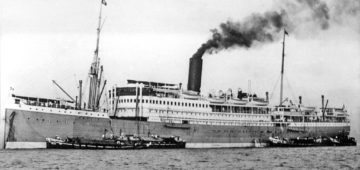



Comments
Sorry, comments are closed for this item